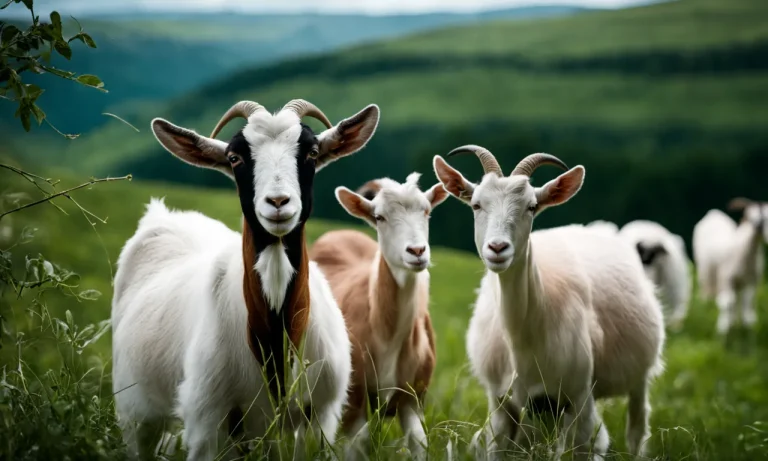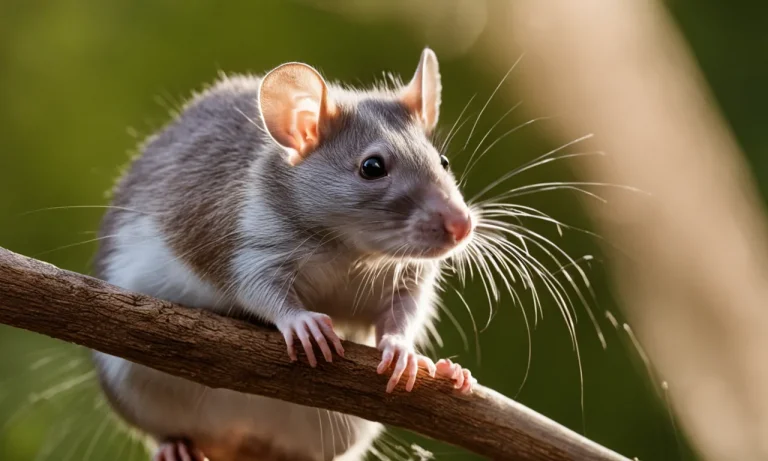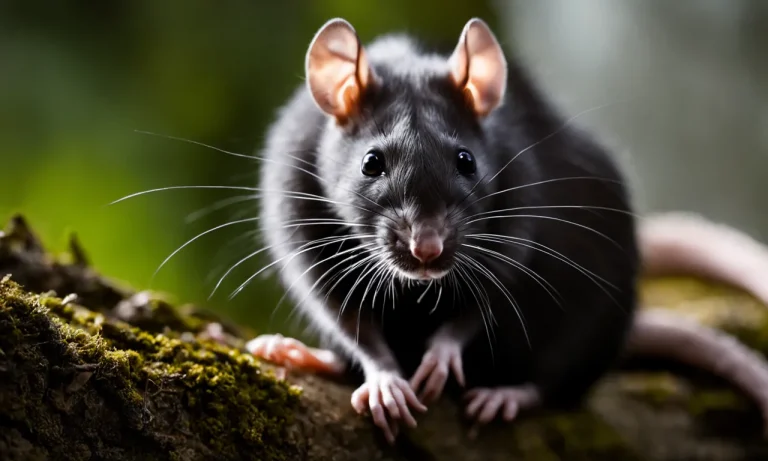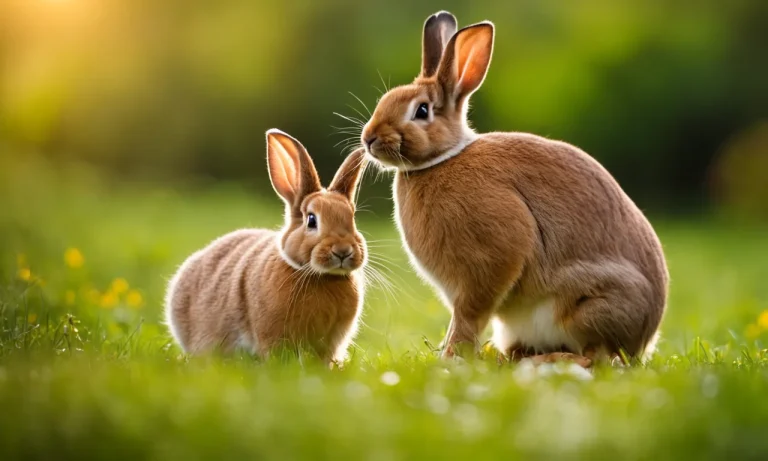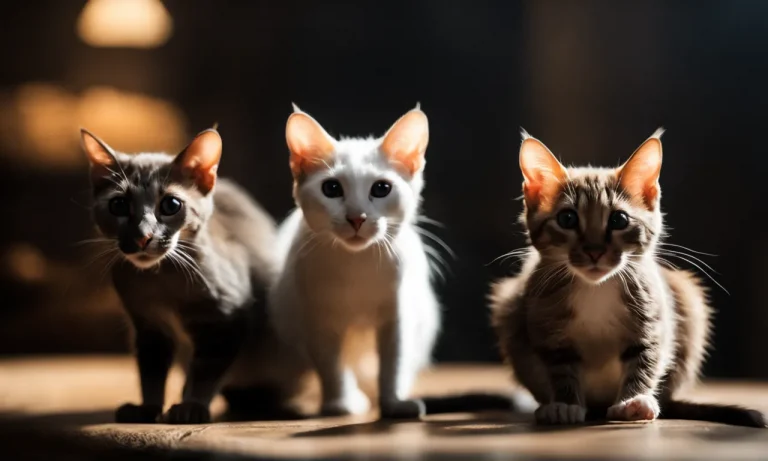Rabbits are known for their rapid reproduction, but what happens when a doe is already pregnant? Will she continue to mate throughout her pregnancy or abstain until she gives birth? This is an important question for rabbit owners hoping to manage their herd’s growth.
If you’re short on time, here’s a quick answer: Yes, it is possible for a pregnant doe rabbit to mate, especially in the early and middle stages of pregnancy when her hormones have not yet changed to signal an impending birth.
In this approximately 3000 word article, we will take an in-depth look at rabbit reproduction, the stages of pregnancy, and the likelihood of a pregnant doe rabbit mating at different points throughout her 31 day gestation period. We will also discuss techniques to prevent unwanted litters.
Understanding Rabbit Reproduction
Rabbits are fascinating creatures when it comes to reproduction. Their reproductive cycle and behavior are quite different from other animals. To gain a better understanding of rabbit reproduction, it is important to explore the rabbit estrous cycle, mating and conception, and the nesting instinct.
The Rabbit Estrous Cycle
Unlike humans and many other mammals, rabbits do not have a regular menstrual cycle. Instead, they have what is known as an “estrous cycle.” This cycle consists of recurring periods of sexual receptivity, followed by periods of infertility.
The duration of the estrous cycle in rabbits is approximately 14 to 16 days.
During the receptive phase of the estrous cycle, a female rabbit, also known as a doe, will display certain behaviors indicating her readiness to mate. These behaviors include increased vocalization, restlessness, and a more receptive posture.
It is during this time that a doe is most likely to accept a male rabbit, or buck, for mating.
Mating and Conception
When a doe is ready to mate, she will allow the buck to mount her. The mating process itself is usually quick, lasting only a few seconds. The buck will mount the doe from behind and will likely make a characteristic grunting sound during the act.
Contrary to popular belief, a pregnant rabbit can still mate. In fact, rabbits are known for their ability to conceive multiple litters in quick succession. However, it is generally recommended to separate pregnant does from males to prevent stress or injuries that may occur during mating.
After successful mating, the doe will become pregnant, and the fertilized eggs will implant in her uterus. The gestation period for rabbits is approximately 31 to 33 days, during which the embryos develop and grow.
Nesting Instinct
Prior to giving birth, a pregnant doe will exhibit nesting behavior. She will gather materials such as straw, hay, and fur to create a cozy nest for her upcoming litter. This nesting instinct is an essential part of preparing for the arrival of the newborns.
It is important to provide a suitable nesting box for the doe to ensure the safety and comfort of the newborn kits. The nesting box should be placed in a quiet and secluded area to minimize disturbances and stress for the mother and her offspring.
Understanding rabbit reproduction can help rabbit owners better care for their pets and ensure their well-being. If you are interested in learning more about rabbit breeding, The Rabbit House provides detailed information on various aspects of rabbit reproduction and breeding.
The Stages of Pregnancy in Rabbits
Early Pregnancy (Days 1-10)
During the early stages of pregnancy in rabbits, there are often no visible signs that the doe (female rabbit) is pregnant. However, there are some internal changes taking place. After mating with a buck (male rabbit), fertilization occurs within the doe’s reproductive tract.
The fertilized egg then implants itself into the lining of the uterus, where it will develop into an embryo.
Although it may be difficult to tell if a rabbit is pregnant during this stage, it’s important to ensure that the doe is provided with proper nutrition and a stress-free environment. This will help support the healthy development of the growing embryos.
Mid Pregnancy (Days 11-25)
As the pregnancy progresses into the mid-stage, physical changes in the doe become more noticeable. The abdomen may start to swell, and the doe may gain weight. However, the size of the litter may also influence the extent of these changes.
During this stage, it’s crucial to monitor the doe’s diet and provide her with a balanced and nutritious diet. This will help support the developing embryos and ensure the doe remains healthy throughout the pregnancy.
Late Pregnancy (Days 26-31)
In the final stages of pregnancy, the doe’s abdomen will become noticeably larger as the unborn kits (baby rabbits) continue to grow. The doe may also start to build a nest in preparation for giving birth.
It’s important to provide a suitable nesting box for the doe, filled with soft bedding materials, such as hay or shredded paper.
During this stage, the doe should be handled with care to avoid causing any stress or harm to her or the unborn kits. It’s advisable to limit disturbances and provide a quiet and calm environment to promote a healthy delivery.
It’s worth noting that rabbits have a relatively short gestation period of around 31 days. If you suspect that your rabbit may be pregnant, it’s always best to consult with a veterinarian for confirmation and guidance on proper care and management during the different stages of pregnancy.
Will a Pregnant Doe Rabbit Still Mate?
Rabbits are known for their reproductive capabilities, and it is not uncommon for a female rabbit, also known as a doe, to become pregnant multiple times throughout the year. However, whether or not a pregnant doe will still engage in mating behavior depends on the stage of pregnancy she is in.
Early Pregnancy Mating
During the early stages of pregnancy, a doe rabbit is less likely to show interest in mating. This is because her body is already focused on nurturing the developing embryos. The hormonal changes that occur during pregnancy can also affect her behavior, making her less receptive to mating attempts from male rabbits.
While it is possible for a pregnant doe to mate during this stage, it is generally advised to separate her from male rabbits to ensure a healthy pregnancy and prevent any potential harm to the unborn kits.
Mid Pregnancy Mating
As the pregnancy progresses, a doe rabbit may show a renewed interest in mating. This is especially true during the mid-pregnancy stage when the embryos have developed and the doe’s body is more prepared for another round of reproduction.
However, it is important to consider the potential risks associated with mating a pregnant doe. The physical exertion and stress of mating can place additional strain on her body, potentially leading to complications or even miscarriage.
Late Pregnancy Mating
In the late stages of pregnancy, it is generally not recommended to allow a doe rabbit to mate. At this point, her body is fully focused on preparing for the birth of the kits, and any additional stress or physical strain could be detrimental to her health and the health of the unborn kits.
During this time, it is important to provide the pregnant doe with a calm and comfortable environment, ensuring that she has access to plenty of food, water, and nesting material to prepare for the impending birth.
It is worth noting that every rabbit is different, and individual behaviors may vary. It is always best to consult with a veterinarian or experienced rabbit breeder for specific advice and guidance regarding the mating of a pregnant doe.
For more information on rabbit breeding and care, visit www.therabbithouse.com.
Preventing Unwanted Litters
One of the key aspects of responsible pet ownership is preventing unwanted litters. Whether you have rabbits as pets or in a breeding program, it is important to take proactive measures to control their mating.
This not only helps in avoiding overpopulation but also ensures the well-being of the rabbits involved. There are several strategies you can employ to prevent unwanted litters, including separating the buck and spaying or neutering.
Separating the Buck
When it comes to preventing unwanted litters, one of the simplest approaches is to separate the buck from the doe. This means keeping the male and female rabbits in separate enclosures, preventing any accidental mating.
It is important to note that rabbits are highly fertile animals, and a single encounter can result in pregnancy. Therefore, it is crucial to keep the buck and doe apart unless you are planning a deliberate mating.
Separating the buck can be done by providing individual hutches or cages for each rabbit. This ensures that there is no opportunity for them to mate. Additionally, it is recommended to keep them in separate rooms or areas to minimize any chances of accidental contact.
By taking these precautions, you can effectively prevent unwanted litters and have better control over the breeding process.
Spaying and Neutering
Another effective method to prevent unwanted litters is by spaying and neutering your rabbits. Spaying refers to the removal of the female rabbit’s reproductive organs, while neutering involves removing the male rabbit’s testicles.
These procedures are commonly performed by veterinarians and are safe for rabbits of appropriate age and health.
Spaying and neutering not only prevent unwanted pregnancies but also offer several health benefits for rabbits. These procedures can reduce the risk of certain cancers and eliminate behaviors associated with mating, such as aggression and territorial marking.
Additionally, spaying and neutering can help extend the lifespan of rabbits, as they are less prone to certain reproductive-related health issues.
If you are considering spaying or neutering your rabbits, it is essential to consult with a veterinarian experienced in rabbit care. They will be able to provide guidance on the best timing for the procedure and ensure that it is conducted safely.
Remember, spaying and neutering are responsible choices that contribute to the overall welfare of your rabbits and help prevent the birth of unwanted litters.
For more information on responsible rabbit ownership and breeding practices, you can visit the House Rabbit Society or the American Rabbit Breeders Association.
Conclusion
In summary, it is possible for pregnant rabbits to continue mating, especially in the first half of gestation before hormone changes signal an impending birth. However, mating late in pregnancy can be dangerous.
To prevent uncontrolled litters, rabbit owners should separate does and bucks or consider spay/neuter once the desired number of litters is reached.
Through understanding the rabbit reproductive cycle and the stages of pregnancy, owners can make informed choices for managing their herd. Monitoring mating activity and gestation can help ensure healthy moms and babies.

